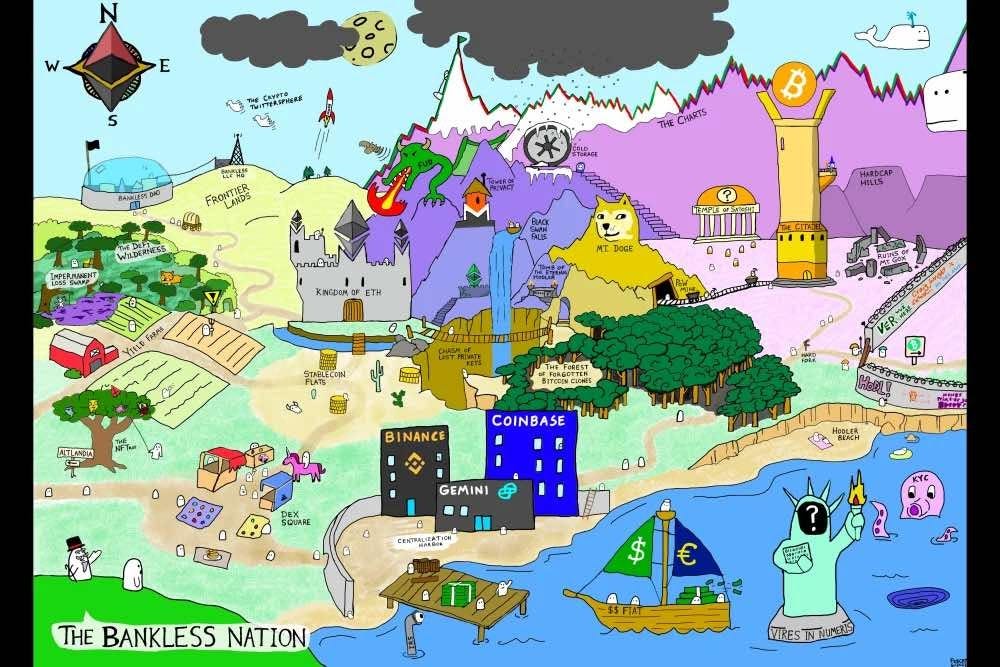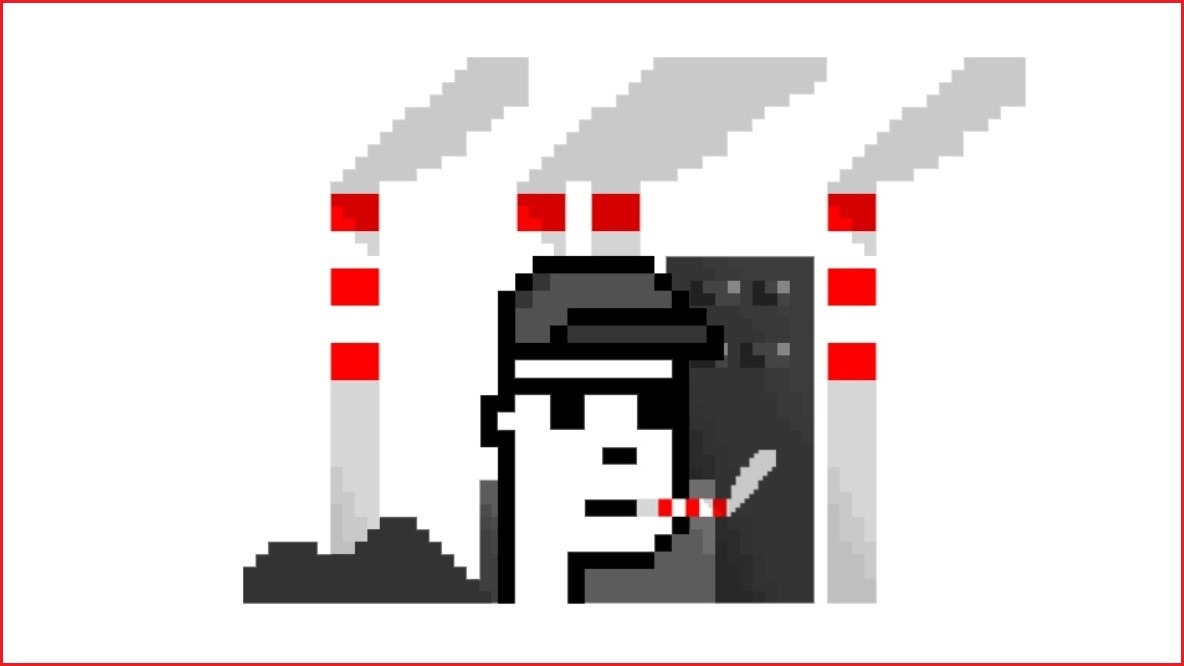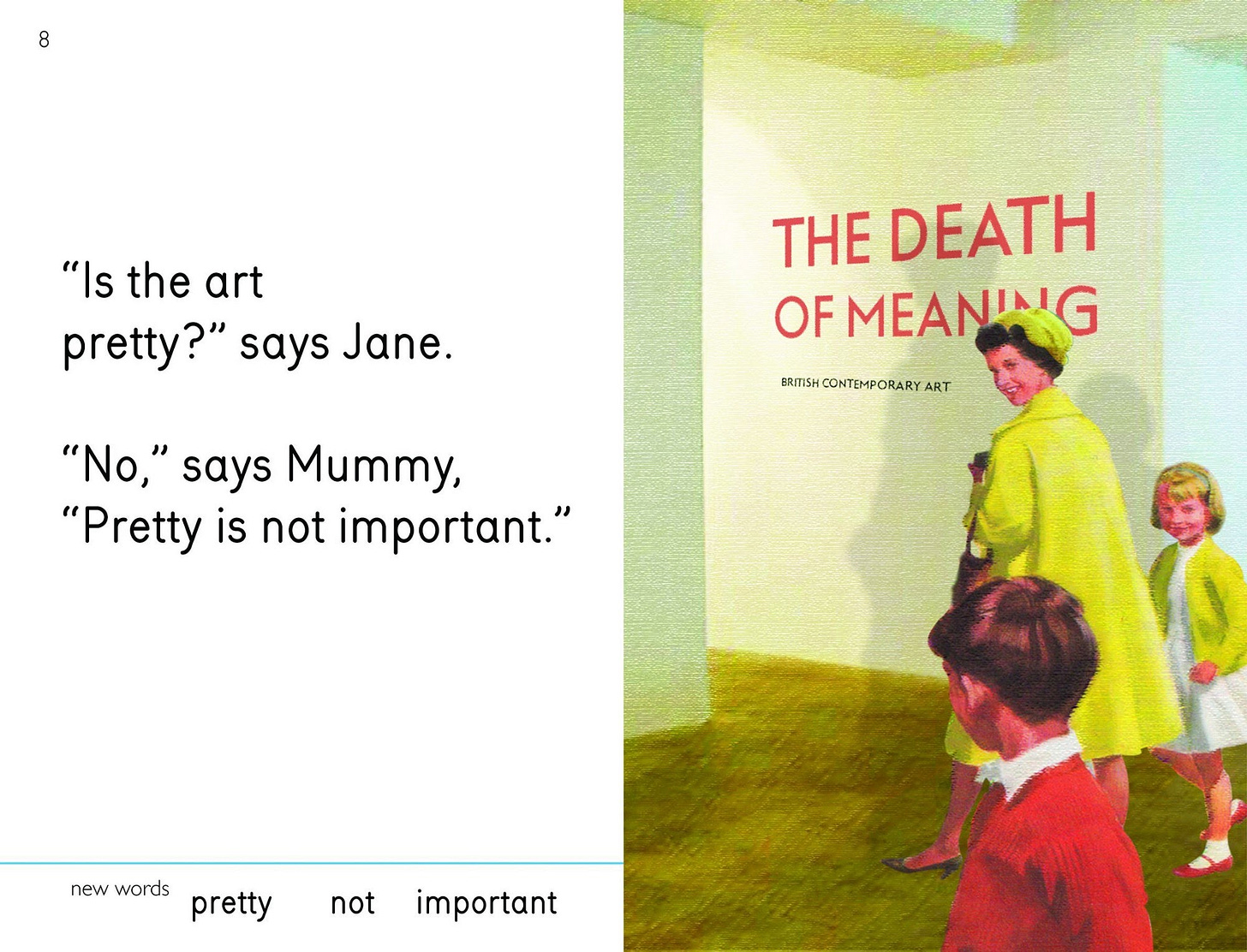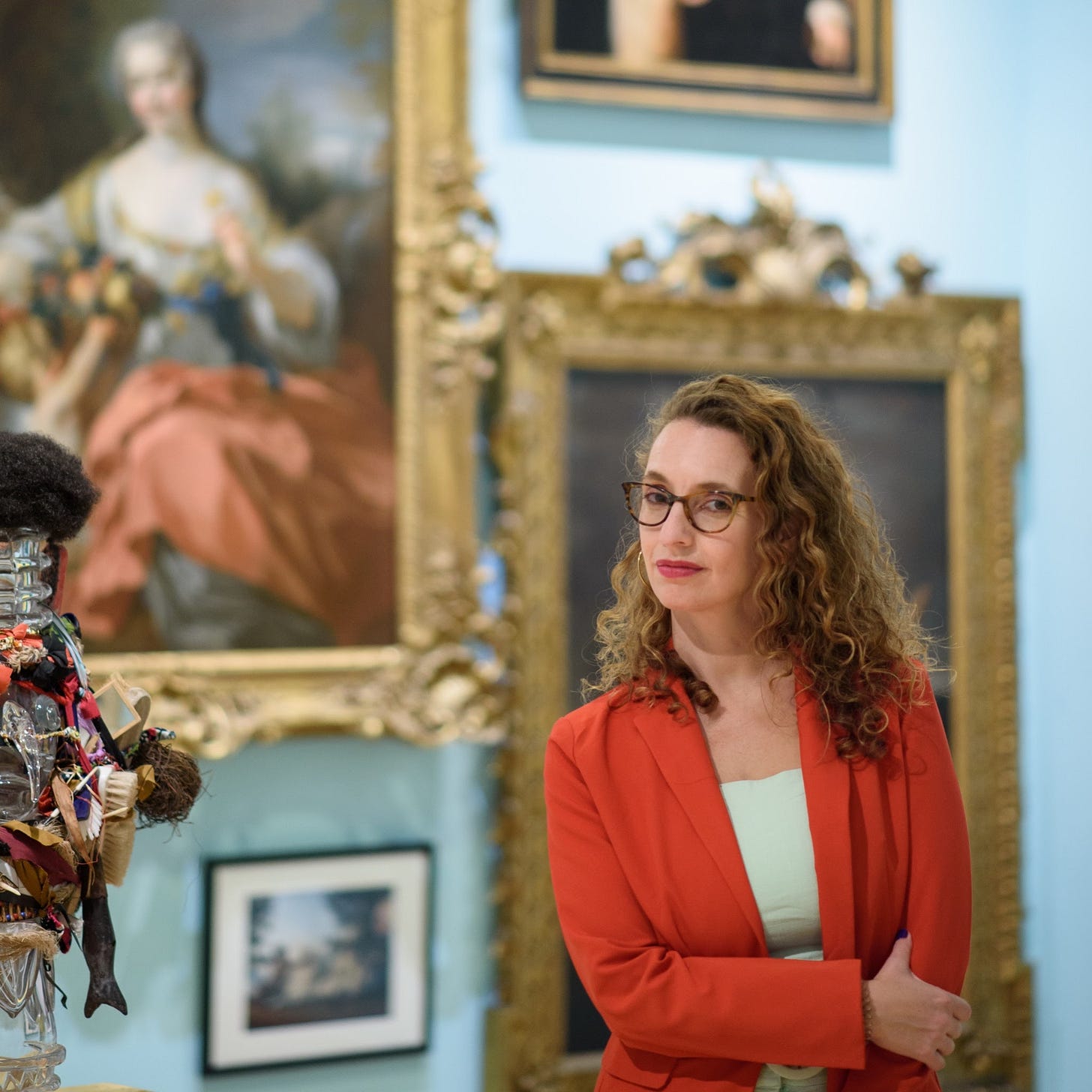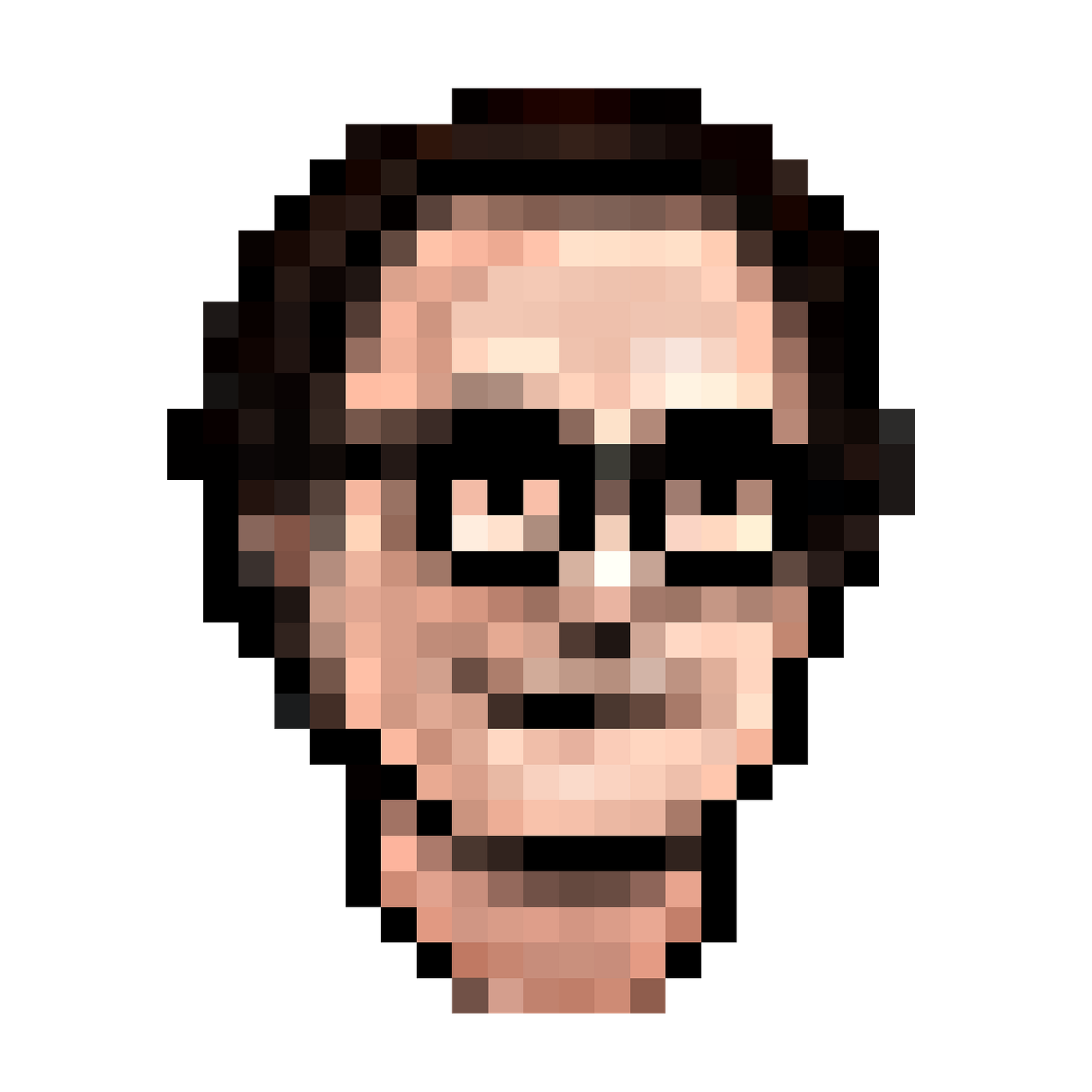Decentralized Arts #3 | September 7
BanklessDAO Weekly NFT and Cryptoart Newsletter
Dear Bankless Nation,
There are some artists who best interpret the ethos of a community. In BanklessDAO, Perchy, with his Chippi, speaks directly to the hearts of the members, representing them so well that it leads to a process of identification: Chippi is a member of the DAO, and members of the DAO are Chippi.
All BanklessDAO members are passionate about NFTs, as evidenced by the success of the NFT Club, in which Crypto Bushi and other contributors discuss current trends. Josh Rosenthal is another highly respected voice when it comes to art and NFTs, of whom we share an original article written with Tam Gryn.
Welcome to Decentralized Arts.
Authors: BanklessDAO Writers Guild (Grendel, Kouros, nonsensetwice, siddhearta)
This is the official NFT newsletter of the BanklessDAO. If you were a Premium Member of the Bankless Newsletter as of May 1st, 2021, you have been subscribed to this newsletter at launch. To unsubscribe, edit your settings here.
Artist of the Week
🧑🎨 Artist: Perchy
🏦 Auction Type: 999 Open Edition
💰 Price: 0.025 ETH
Perchy draws cartoons on crypto, NFTs and DAOs.
He is co-founder of CyberHornetsNFT and collaborates with BanklessDAO, of which he is one of the most respected artists.
bDAO: Tell us how you became a crypto artist.
Perchy: I became a crypto artist because of Bankless DAO! I think it was on the second or third Community Call when the “PO-AP”/”POPE” debate happened, and the idea for creating a comic about the DAO popped into my head. Later, I broadened my scope to crypto in general. A little while after that, I drew the Bankless Nation map. That’s when I knew for sure that I was going to stay here and commit to this full time.
bDAO: Define what cryptoart is for you.
Perchy: I think Joshua Rosenthal nailed it when he described crypto and NFTs as a modern Renaissance. Collectors that buy a new artist’s NFTs are patrons, but they are also shrewd investors if the artist blows up. It’s this amazing synergy where the artist and collector are able to support one another, and propel one another forward. It’s incredible. Cryptoart has unlocked so many new possibilities. For example, in advance of releasing Mount Doge, three of my supporters (including you, Kouros :)), acquired special tickets which got them drawn into this NFT (see if you can find them!)
bDAO: The Bankless Nation NFT was a huge success. So the work you are dropping today continues exploring this in more detail. What can you tell us about Mt. Doge?
Perchy: Of course! The tribalism inside of the Bankless Nation can get a little bit tense sometimes, but Mount Doge National Park is an oasis where everyone can loosen up and have some fun. Whether you want to play with doges, delve deep into the Dogemines, watch the Dogestorms roll in across the plains, or buy some dank memes, there is something for you here. In the bigger picture - Mount Doge is the first drop in my new series that will visit all of the noteworthy locations within the Bankless Nation.
bDAO: We’ve learned that the characters that live in your Bankless Nation are called Chippi and that you are working on a PFP project with them. Can you give us some alpha?
Perchy: Sure! The Chippi are all hand-drawn, 1/1s. What separates this PFP project from others is that each character plays a role (some big, some small) in the ongoing “The Future is DAO” storyline! The Chippiverse will slowly expand as the comic grows, but these first characters will always be the first. In other words - I think they look rare. Dr. DAO, the wise “old man” of crypto, is being auctioned by the DAO alongside the Mount Doge sale. The rest of the characters are being released one by one on my Rarible account right now! Follow me on Twitter @TheFutureIsDAO1 and on Rarible @perchy if you want updates on the drop.
bDAO: What relationship do you imagine between your NFTs and merchandising? Do you believe more in digital or physical merchandising?
Perchy: My main focus right now is on the NFT space, but who doesn’t love physical merchandise too? When I create merchandise, I really want it to be special. I really liked how the Metafactory drop was handled, and I’m bullish on Bankless DAO’s Ultrasound Merch shop!
bDAO: What does it feel like to be part of an imperishable work of art on the blockchain?
Kouros: Being in one of the Bankless locations NFTs as a Chippi is such an honour. I’m a big fan of Perchy’s work so it is great to see a character representing me in there. Now I’m going to tell you an anecdote. So to be able to be featured in “Mt Doge” NFT, you needed to buy one of the tickets that Perchy put on auction. Two minutes before the end of the auction I was ready to place my bid and my internet browser froze and I was so shocked that I couldn’t believe it. Anyway, I went quickly to my phone and started doing the whole thing but I was like 2 seconds late. However, Tunsky107.eth, had bought the two tickets on auction so I reached out to him and explained what had happened and he told me that he only intended to buy one of the tickets so he sold one to me. Phew
bDAO: Does it strike you to think that your digital alter-ego, represented in the work, can pass from one collector to another?
Kouros: I haven’t thought about it but maybe in the future someone will look at it and wonder about who the hell this Kouros is. Hahaha
Curated NFT News
24px phenomenon
24px started off as a stealth drop on the OpenSea shared contract and grew into one of the strongest communities in the NFT space in a matter of weeks. The allure of an anonymous dev and a taunting message in the description of the collection captured the imagination of many riddle enthusiasts, cypherpunks, and armchair detectives alongside the slew of pixelart fans. That's how it all began. The mantra of 24px is "No dev. No Roadmap. No Utility. Just Pixels." The reality is that the community IS the utility. Everyone that bought into this project had no expectations. Everyone was buying a JPEG fully aware that it might go to zero. The fascinating part is how from day one, people started rallying behind an idea: an idea that all the cheap thrills and frills of most other projects are completely irrelevant; an idea that a community can run itself better than a team that is primarily driven by a monetary incentive. No 24px contributor has been paid. In fact nobody in the 24px community has made a dime outside of selling an NFT on the secondary market. This place is a congregation of dreamers and builders working together, putting in their time, supporting each other and a community they’ve made their own, taking their governance into their own hands and Building a DAO. And it didn’t take a dev, or a road-map, or utility. Just pixels, passion and a strong belief that decentralization is the answer.
NFT Collector Pranksy buys fake Banksy NFT for $336K
A hacker momentarily created a page on Banksy's site, "banksy.co.uk/NFT," that linked to an online auction for an NFT supposedly made by the artist.
Banksy's team was warned his website had a security weakness seven days before a hacker scammed Pranksy out of 100 ETH. However, he has reported that the scammer has returned 97.96ETH back to him.
Some have speculated that this could be an elaborate publicity stunt by Banksy but his team told the BBC "any Banksy NFT auctions are not affiliated with the artist in any shape or form."
The Loot project takes the NFT world by storm
Just over a week ago Dom Hofmann tweeted about the launch of Loot, a text based RPG game in the form of NFTs.
Hofmann wrote a random item generator that returned names of weapons, pieces of armor and accessories that were bundled and sold as "Loot Bags." These are unique lists of items that will determine the player’s in-game attributes. In addition to this, Loot is an open source project that anyone can build on. There have been a number of derivatives that let you have a list of all sorts like Maps, Gear, Treasure, Realms, etc....
One thing worthy of noting is that the majority of these projects let you claim the “Loot bags” for free (+ gas). However, the floor for the original Loot at the time of writing is 13 ETH, but it has reached 20 ETH in the past few days.
Loot is the new craze in the booming NFT market and everyone is talking about it.
Neo-Renaissance: Crypto as a ‘New’ Opportunity for Art written by Tam Gryn & Josh Rosenthal
The current crypto revolution is strikingly similar to the Renaissance in terms of its transformative effect on society and culture.
If you want to understand the impact of the crypto ecosystem, you have to go back to the end of the Middle Ages and the beginning of the Renaissance. Communities created a cultural revolution by embracing new technologies like the printing press, which is comparable to today’s Internet and the discovery of ledger-based double-entry bookkeeping in finance, which is the equivalent of today’s crypto economy.
By adopting these permissionless technologies, entrepreneurs created new markets and artists captured the value they created. Communities adopted these decentralized technologies to organize themselves and improve their socio-economic position. This transformation was so fundamental to every layer of society that it became known as the Renaissance, or “re-birth” of their world.
From the mock children’s book “We Go To The Gallery” by Miriam Elia
The Renaissance Matrix: Creative Destruction
The Middle Ages was an era of centralized hierarchies where the church aggregated wealth, the nobility controlled economic options, and political and religious authorities exercised power through elaborate permission structures. Culture flowed from the top down as privileged individuals at the summit of social hierarchies enforced and controlled community identity by serving as patrons for select artists to create mandated works designed to reinforce how individuals perceived their places and stations in life.
The Renaissance marked a shift to decentralized wealth, distributed communication, and a fundamental ‘unlock’ of culture in which artists interacted with all people across all the socio-economic layers. The advent of ledger-based financial systems (double-entry bookkeeping) increased the velocity of capital and the creation of financial products. This new financial technology massively expanded access to money and wealth-building technology thereby powering emerging social classes.
At the same time, the rise of the printing press likewise increased the velocity of information and the creation of new ideas. An increasing popular and growing technological proficiency with the print protocol massively expanded access to both words and images. This new communication technology introduced new concepts across a wide variety of communities at a previously unimaginable speed and scale, thereby engendering new ways of looking at the world, interpreting society and expressing meaning.
The Renaissance Event: ‘Unlocking’ Art
Whereas culture in the Middle Ages was permissed and top-down, the Renaissance unleashed new wealth and ignited unstoppable communication, thus changing not only the way communities created culture through art, but the nature of culture itself.
Emerging networks of wealthy families such as the Medici became new players on the scene vying against the church and the nobility, then using their newfound wealth to co-opt and remake those institutions. They expressed their new status, and vision for what was valuable by sponsoring art and serving as artists’ patrons. Rather than the closely controlled ‘dictation’ of Medieval patronage, they sponsored new artists and types of artists and collaborated with them in cooperative, even co-creative, relationships.
The new patrons of the arts also expanded the nature of what was worthy to be considered “art” by inviting artists to interact with new content rendered with exciting techniques, beyond the flat two-dimensional, symbol-driven religious renderings that had characterized the Middle Ages. Renaissance artists created a new movement by crafting hyper-realistic renditions and exploring new technologies for fresco-based art. Compared to their Medieval context, these works were stunningly realistic and almost magical. The change is best compared to our early explorations of Virtual Reality and Augmented Reality (VR/AR) and the impact was so substantial that the artists' names define our concept of the era. Names like Boticelli, Michelangelo, and Leonardo da Vinci ring throughout the ages.
Artists in the Renaissance embraced and benefited from another technology, one that increased the reach of their works to broader audiences and allowed them to explore working in a new type of medium. The printing press not only unlocked the word for the literate, but the image for the masses. Artists employed this technology to produce images at an unprecedented scale, working in new media like woodcuts and copper etchings.
The burgeoning artistic community produced an unstoppable output--bypassing permissioned controls of the Medieval authorities--and their work proved wildly popular, empowering their creativity. Early printed works were copies of hand-written formats, but almost immediately, artists interacted with technology to create new types of art. Large visuals, pamphlets, or posters featured predominant images with large font typography with related titles or taglines. These broadsheets are best understood as ‘memes’, images with taglines loaded with semiotic functions to virally communicate ideas. This new art form dominated the market, and artists quickly created compendiums, derivations, dialogues, and ‘mash-ups’. Artists worked in networks with printers, authors, and typographical craftspeople to create a virtuous economic cycle that not only met initial demand but created additional widespread popular demand. The result was a Cambrian explosion of creativity in which economics met art as artists embraced a new type of media endemic to the nature of the new technology and its emerging market.
The Renaissance Impact: Opportunity for ‘Art’
In the Renaissance, artists increased the scope and audience for their works. They also changed the way in which they interacted with technology. They crafted new economic opportunities. Art was no longer typically guarded in a noble residence or cloistered in an ecclesiastical structure. Artists’ works were now found in taverns and public houses, in the hands of merchants and farmers. And, by interacting with new, and even radical, ideas about society, status, and value, artists recast their role by interpreting the meaning of these ideas and co-creating identity with communities.
Currently, our Nation-State era is experiencing the pains of a rebirth. Technology catalyzes cultural change. During the last Renaissance, artists benefited from decentralized financial technology and employed permissionless communication technology to contribute to, and even orchestrate, a cultural revolution.
Today, cryptography provides another cataclysmic opportunity for artists to benefit from expansive economics, create new media via emerging technology, and reprise their role orchestrating a cultural re-birth. Just as double-entry bookkeeping and the print protocol did in the Renaissance, cryptography today uses ledger-based technologies to create decentralized value and communicate that value, information and ideas--interpretation and meaning--through unstoppable distributed protocols. Cryptography allows new participants to create and proliferate wealth, and provides the opportunity for new players to enter the game.
Resource: Bankless - Crypto Renaissance
Current Trends: Digitalization and Community
History teaches us about our future potential. Just as we saw with the Renaissance, today artists have a marked opportunity to benefit from cataclysmic trends around digitalization and to meaningfully participate in emerging crypto communities. When individuals gain wealth through new technology, they tend to express their status through art as patrons and co-create culture in new forms that employ the same technological expression. Just as new communities formed identities in the Renaissance through art endemic to the nature of the new technology, the crypto ecosystem is witnessing an explosion of art through native crypto technologies -- working in digital media and capturing and expressing value in non fungible tokens (NFTs) and their more autonomous expression directly from artists as social tokens.
The real world is growing increasingly digital and modern art is reflecting this dynamic. After 18 months of Zoom calls, remote work seems to be a much more common reality than it was pre-pandemic. We are starting a global digitalization movement. Our computers and phones hold endless discoveries. We can find an endless amount of creators and artists online.
Today, artists spend countless unpaid hours using social media in order to build something for an audience in return for basic engagement, ie. likes, comments, shares. These are followers. Tomorrow, artists will build WITH the communities that they have leveraged in social media of the 2000s. Community is the natural consequence of social media.
Value is created by groups of people who come together around something they care about. The most vibrant communities give people the opportunity to discuss and take action around a shared purpose. Active community members won't just support artists, they will join them, commit to their vision, even participate in helping to build it and then endlessly preach about their community to everyone they know.
There are more creators and innovations now than at any other time in history. However, they all currently face the same dilemma of creation versus monetization.
Current Dilemma: Creation-versus-Monetization
Today, art and money are often seen as distinct, even taboo, but that is an historical aberration. In the Middle Ages, art was not fundamentally integrated into the socio-economic system in a generative way. In other words, the artist was dependent upon the elite political and ecclesiatical power structures and art was permissioned in its content and dissemination. In the Renaissance, it was opened up to economics as patronage helped the artist create wealth, but it was still ultimately controlled by a small group of elites. Artists availed themselves to the new print technology and gained broader audiences and further economic benefits. But today’s opportunity for artists with the crypto ecosystem is a magnitude of order larger. Today’s decentralized value and information technologies allow full access to economic participation by any artist and any patron, at a global scale with near instantaneous speed.
The phenomenon of a hungry artist can be partially associated with the concept of “Art for art's sake.” This phrase appeared for the first time in 1833 in France. It denotes the autonomy of creativity and the independence of art from public life. If we interpret it in the context of monetization, it turns out that we cannot talk about earning money by art, because in this concept art is outside of business discourse.
Every single artist has faced this dilemma. Contrary to predominant belief in the art world, artists have always been entrepreneurs. They can go as far as they want within the control of the financial costs of their materials, the means in which they are going to sell their artworks, and the ways they can promote themselves. With crypto, everything changes as dramatically as with the advent of the Internet. Social tokens--or cryptocurrencies issued by artists that unlock various benefits--allow artists and their communities to monetize in a decentralized way. These tools allow artists to monetize both directly and through the communities, which serve as an ancillary, amplifying force while accumulating rewards from the system. Social tokens will transform artists’ careers, and thus society, because artists will be in a more economically viable position to create.
Currently, some artists do this effectively by using Discord to leverage their communities for the knowledge of individual participants, then participants in turn use their knowledge to benefit other members of the community, and the community thereby collectively monetizes through their social tokens in a symbiotic way. For example, $STARK’s Jen Stark brings in members who are experts in different areas of the art world: photography, NFTs, sculpture collectors, crypto, etc. to teach and grow the rest of the community. They can pay each other with $STARK, which, in turn, grows stronger. This benefits all participants and glues the community together. Similarly, an artist can create discord channels per geography so that not only can he talk directly to his audiences in different places but once they have a show there, they already have ambassadors, helpers, volunteers, installers, contacts and everything they might need within thier own community of followers. None of this is possible with today’s social media model.
Artist as Neo-Renaissance ‘Prophet’
During the last Renaissance, artists played a unique role that benefitted every layer of society. The Medieval hierarchies were falling apart, power was unraveling, and institutions were coming undone. Many thought the world was ending. And, in some sense, they were right. The world as they knew it was being reborn. Communities employed the decentralized technologies to coordinate and organize; the way they did so revolved around ideas, images, interpretation, and meaning. They collaborated with artists to create, reveal, and refine their identity; that is, their values, their ideals, and the meaning of their relationships to each other and the world.
Artists are, by definition, experts at observing. An artist sees a tree in a way that’s fundamentally different from us mortals, and they can use that same power to help innovate the rest of society. Artists researching a topic are aware of details that we do not see; it is their job to show us how to see better. Artists naturally merge more deeply with the spaces they research, observe, and use as a basis for their creative work. By showcasing art in a new industry context, artists will reinterpret entire industries, first disrupting them, then improving them by opening the minds of those that matter to those industries, those outside of the art world.
Artists need to be at the center of the economy. They are the first people to observe opportunities in every area of life. They show it in their work. They push society forward and make everyone else accountable for improvement. Artists create movements that the rest of society follows, they are the first to see trends emerge, such as they do in real estate, fashion, music and everything else.
In 2021, I think we are more ready than ever to more deeply integrate art and other industries. The myth of the starving artist is dead. Artists are no longer outcasts, but rather the most desired people in society. Everyone needs creativity in an economy that requires us to reinvent ourselves faster than you can say Q3. In a planet plagued by economic crises, unpredictable social movements, technological changes, climate and healthcare catastrophes, we need artists more than ever to give us a prophetic perspective in order to reveal ideas that we need to survive. Crypto allows artists to improve their economic position and more equitably aligns financial incentives with the value artists bring to industry, and more broadly, society.
Artist as Crypto Community ‘Orchestrator’
History is made through the power of communities and today artists have an opportunity to play an important role, just as they did at the last Renaissance, by orchestrating communities.
There is no point in resisting crypto since it is the future and it is here to stay. The technology is too powerful and the benefits to artists are too formidable. There is so much more to the intersection of art and crypto than just NFTs and there is more to NFTs than currently meets the eye. The crypto art movement means true financial independence for artists.
Artists are playing fundamental roles in crafting, guiding, and coordinating communities around their works. The particular nature of the crypto technology gives artists new powers and abilities to orchestrate this coordination. Decentralized art maximizes transparency, provenance, accessibility, revenue streams, liquidity, community, exchange, patronage, and collecting. Artists are now adding their own collectors into Discord channels and offering unique access to NFT drops, there are open conversations about pricing and strategy and reasons for collecting. Artists are making future-proof, ‘smart’ moves.
Crypto allows art and information to be shared without permission and through self-emergent coordination. Communities by definition act in a coordinated effort and that is why communities wield the power to make history. Crypto empowers communities to organize by answering the fundamental questions of how you motivate people and how you compensate them.
Artists help catalyze the act of organizing by creating and sharing ideals, ideas that cannot be locked. Artists create memes, NFTs and distribute them to the people, trading in their own coins at a speed and with an autonomous power that cannot be held back by governments, banks, galleries, museums, or gatekeepers of any sort. Galleries and museums increasingly participate in this crypto ecosystem and, by doing so, legitimize this movement. By creating the ideas, revealing meaning, and distributing both the technological artifacts artists help orchestrate the communities and form their identity.
The Artists’ Tools: NFTs and Social Tokens
NFTs are the best kind of transaction and they represent a new technological power that was not available to artists or communities at the last Renaissance. For the first time we are talking about royalties in the art market in a meaningful and practical way, and that is truly revolutionary.
However, an NFT exchange is still a fundamentally transactional event. Once a collector buys an NFT from an artist there is nothing necessarily binding them together. The next level of interaction is a more meaningful tie than simple social media, and that comes in the form of a social token. Social tokens create a tighter bond: a relationship. Social tokens are a circular, relational and symbiotic way for artists to have autonomous economic sustainability.
The way that artists are adapting to this new crypto environment is already incredibly robust and complex. Communities now exist globally around artists as a natural consequence of the amount of unpaid time artists spend on social media.
Artists have engaged in social media to create communities, but this is a loose connection without economic alignment. Crypto solves that by more tightly aligning incentives. Specifically, NFTs will replace all content and all content ownership, and social tokens will, ultimately, supplant social media.
During the last Renaissance, artists played pivotal roles in shepherding communities from the dissolution of Medieval hierarchies through a rebirth of society. Artists empowered groups to coordinate and discern meaning in their work, their relationships, and their lives. Artists not only embraced, but availed themselves to the distributed technology to create, communicate and craft a virtuous economic cycle in which they were not only compensated for the value they created but collaboratively generated new opportunities across socio-economic lines. Today we stand on the brink of another transformation in which similar distributed technologies allow communities to unwind power hierarchies and reform society. Artists can yet again play a unique role by embracing the new technological tools, NFTs and social tokens, and play the role of the prophet, benefiting industry and helping orchestrate our new Renaissance: a crypto Renaissance.
Tam Gryn is the Director of Fine Arts at Rally.io, where she helps artists create their own autonomous crypto economies. She is also Head Curator at SHOWFIELDS. She is the former Head of the Curatorial Department of the Artist Pension Trust as well as Head Curator for RAW POP UP. Tam is the co-founder of Culturadora and currently sits on the Board of Directors of the Kulturspace Foundation in Berlin. She has curated multiple art exhibitions as well as charity fundraisers. Clients and collaborators include The Brooklyn Museum, The Whitney Museum, Museo de Arte Contemporaneo de Puerto Rico, Glossier, Heineken, Bombay Sapphire, The Glenlivet, Diptyque, Evian, Mastercard, and SVA School of Visual Arts NYC. Originally from Venezuela, Tam studied Art History at the Sorbonne University, Politics at Reichman University and Negotiations at Tel Aviv University.
Josh Rosenthal, PhD | Rehabilitated Historian | 2X Exited Founder | Partner @6ixthEvent, EY Entrepreneur of the Year / Fulbright / PhD / Sorbonne’s Institute for Advanced Studies (EPHE) / Guest Lecturer @ Harvard, MIT, Hopkins, SXSW, etc. Work featured in Entrepreneur Magazine, Forbes, Bloomberg, & US News / Named a CMS Innovator. Co-founder & CSO @ Sprigley [Acquired by Eliza, 2009]. Deal team @ Eliza [majority stake investment by Parthenon Capital, 2011]. Co-founder & CSO @ RowdMap, Inc. [Acquired by Cotiviti (COTV), 2017]. Served as Expert Advisor to OSTP, ONC, HHS, NCVHS, NCQA, Robert Wood Johnson, etc. Today runs a crypto-first venture fund, a crypto-first family office, and a historic bourbon bar-turned metaverse docking station.
In the next issue of Decentralized Arts you will find an interview with Tam and Josh related to the theme of the NeoRenaissance.
Call to Action
BanklessDAO NFT weekly showcase: Get ready for next week's new NFT showcases!
Participate in the Nft-Club channel: Share your passion for NFTs, your favorite collections, your favorite crypto artists in the channel!





